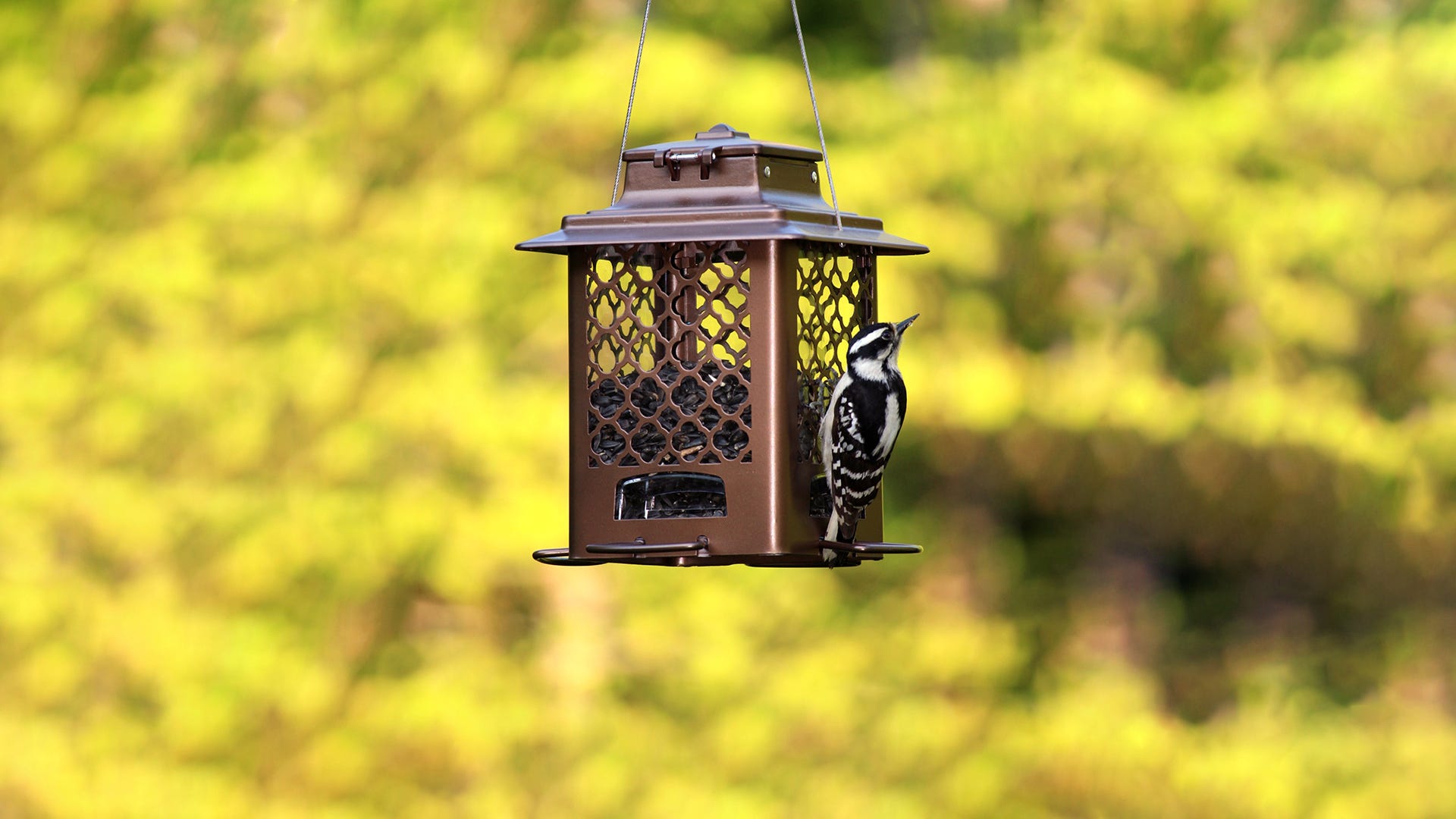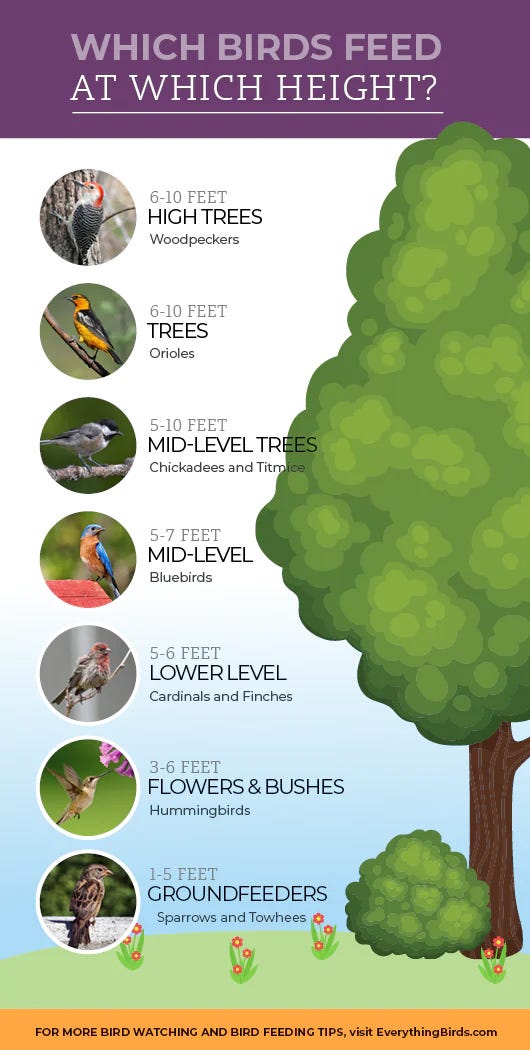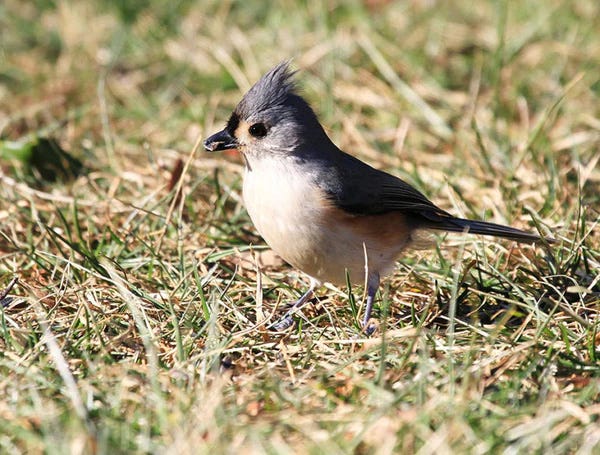
Every birder has seen birds foraging at different heights. Quail, juncos, and thrashers are often seen feeding on the ground. Catbirds, sparrows, and buntings are usually spotted in the bushes. Warblers, vireos, and kinglets can be seen feeding high in the trees. But what do these feeding heights mean for proper bird feeder placement? Will hanging bird feeders at the right height help to attract more birds?

Why Birds Feed at Different Heights
Birds are adapted to different niches and take advantage of different food sources. This means they naturally feed at different heights where those foods are easiest to find and most abundant. Many seed-eating birds, for example, feed on the ground or lower in bushes and shrubbery where they are more likely to find seeds. Fruit-eating birds feed where fruit ripens, from the mid-levels of berry bushes to high up in fruit-bearing trees.
Insects are a popular food for many birds, and they live at a variety of heights. Grubs, ants, and larvae are most often lower down, while gnats and other winged insects are found higher up in plant foliage.
Feeding height is not a hard-and-fast rule for most birds, and they will easily feed at different levels if the foods catch their eyes. Birds often change their diets depending on what foods are available at different times, and they can easily adjust to different feeder heights as well.
See also: Where to Hang Seed Feeders for Birds
Best Bird Feeder Heights
The best height for a bird feeder will be a level where the birds are most comfortable and most familiar with for finding their preferred foods. When the feeder is at a comfortable height, it is also likely to attract more species and host a more varied flock. The most popular bird feeder heights for popular backyard birds are:
- Cardinals and finches (feed at lower levels) – approximately eye level, 5–6 feet
- Woodpeckers (feed higher in trees) – 6–10 feet
- Hummingbirds (feed from flowering bushes and vines) – 3–6 feet
- Sparrows and towhees (ground feeders) – 1–5 feet
- Chickadees and titmice (mid-level tree feeders) – 5–10 feet
- Bluebirds (mid-levels and ground feeding) – 5–7 feet
- Orioles (feed in bushes and trees) – 6–10 feet
There is a great deal of flexibility with bird feeder heights. It's not unusual to find birds at feeders that may be higher or lower than where they might naturally feed. Most bird feeders are positioned at 5-6 feet, and that suits many of the most popular backyard birds perfectly.
See also: How to Successfully Squirrel-Proof Your Bird FeedersOther Considerations for Feeder Height
Because birds are flexible with their feeding locations, birders can consider more than just how high a bird typically feeds when they position feeders. Safety is an especially important concern. Feeders should be at heights that are good for birds but bad for predators. Cats can jump several feet in the air. That means a low feeder could be an easy target for a prowling cat.
Squirrels are also good jumpers, and can easily jump onto feeders that are too low or too close to branches, rooflines, fences, or other jumping off spots. So, using sturdy baffles and positioning feeders slightly higher is a good way to keep most squirrels off a bird feeder.
Convenience is another consideration for bird feeders. If a feeder is too high, a ladder or lift-and-lower system may be necessary to refill or clean the feeder. When a feeder becomes too inconvenient, it may become neglected and will not be a good resource for hungry birds. A height of 5-6 feet isn't too far out of reach for most birders, but is tall enough – with a good baffle and a good feeder design – to be safe for birds.
Birds are likely to find your feeders no matter what height they're at, and choosing a safe, convenient height will ensure that both you and birds can enjoy the feeder even more.
See also: 4 Ways to Protect Your Backyard Birds from Birds of Prey






